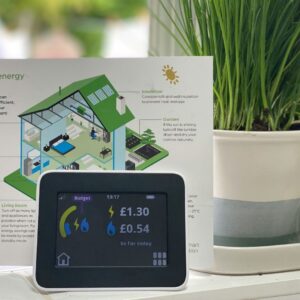The European Open Banking ecosystem has reached a level of maturity that might have seemed hard to imagine, even just a couple of years ago.
Recent figures published by the Open Banking Implementation Entity (OBIE) revealed there are now five million users of Open Banking-enabled services in the UK. And in January, the UK hit a new milestone for open payments, with more than 3.86 million successful payments processed — that’s 20,000 more open payments processed every day in January than in December.
In the words of OBIE trustee Charlotte Crosswell, this growth represents a “world-leading and thriving ecosystem” that is “driving mass user adoption”.
In Europe, Konsentus CEO Mike Woods has remarked: “We’ve historically said that the UK is 18 months to two years ahead of the EEA, but the gap is clearly narrowing. Over the past year, TPP numbers have risen four times faster in the EEA than the UK, with volumes in the EEA reaching the milestone of 1bn monthly API calls.”

Token’s Nikita Septucha
At Token, we have observed API stability and predictability improve significantly in Europe over the past year.
While some institutions continue to identify API fixes required on their end, we are approaching a state where most connections are proven. This is the foundation we need to really be able to shift away from traditional payment methods, like cards, to Open Banking-enabled account-to-account (A2A) payments.
I believe it’s time to stop talking about Open Banking connections in terms of the number of bank APIs a provider can connect to. Instead, we should start talking about coverage in terms of the breadth and depth providers offer on a country-by-country basis.
The ‘fiction’
As the headline suggests, at Token, we think there is a misconception about Open Banking connectivity in Europe that persists.
As the Open Banking ecosystem in Europe continues to mature, the number of connections that an Open Banking provider offers is no longer the best gauge for measuring their coverage.
In other words, given the current state of Open Banking’s maturity, “the higher the number of connections, the better” is a fiction.
Establishing the facts
Let me explain what I mean when I say not all Open Banking connections are equal.
Here is the first truth: The “quantity” of connections does matter — but insofar as this reflects a PSP’s or gateway’s or end merchant’s key markets.
If a provider claims it is connected to 4000 banks, but 3900 of those are in countries that are not relevant for the PSP or merchants’ purposes, it’s easy to see how this metric quickly loses relevance.
Instead, businesses evaluating Open Banking providers should be asking: what countries are connected? And, what percentage of each country’s banked population is covered under those connections?
A provider may claim they are connected to 26 countries, but their connections could only cover 10% of the banked population’s deposits in each of those countries, which will obviously create challenges for end merchants down the line.
At Token, our coverage extends across 14 countries in Europe – with more coming soon – representing over 210 million potential end-users of Open Payments and €13 trillion in customer deposits. In supported countries, our average coverage of the banked population’s deposits is 85%, and as high as 95% in some markets like the UK, Belgium and Estonia.
There is another truth about Open Banking in Europe though: the “quality” of Open Banking connections matters.
Here, there are several questions for PSPs and merchants to consider: On top of what portion of the banked population is covered, how reliable are those connections? Do they stand up to high volumes of transactions?
What kind of payment success rates should merchants expect connections to provide across their use cases and key geographies?
Building-for-quality best practice
At Token, we go to great lengths to ensure our Open Banking coverage is best-in-class and to drive the highest conversion rates in the industry. That means we continuously and rigorously test our network of connections, and invest heavily in upgrading and maintaining our connections.
It also means conducting extensive discussions and testing to maximise API performance and lead the industry in driving high success rates, and then live testing all of the accounts that we make available as part of our release cycle.
In addition, we invest time and resources in answering key questions that every PSP should be asking their Open Banking provider, given they relate directly to the kinds of conversion rates one can expect to achieve:
One of these key questions is, do you have insight on whether there is IBAN discrimination in my key markets?
At Token, for example, we’re able to advise our customers that IBAN discrimination is almost non-existent in the Netherlands but remains a considerable challenge in countries like France and Germany.
Another important question for PSPs and merchants to ask is, do you know whether SEPA and SEPA Instant both work in my key markets?
We’ve been able to advise our customers that there are a number of examples in France and Spain where some branches of a financial institution support SEPA Instant while others don’t. We are assured the European Commission is preparing to legislate on SEPA Instant coverage, but until such time, working with a provider that can offer intelligence on this matter is extremely valuable.
The final key question to be posing is, do you understand all of the aspects of how individual banks process payments?
By way of an example, here at Token we are always working to understand better individual banks’ processing logic and how they report the status of funds because this is not necessarily straightforward or consistent across banks.
Prepare for a mindset shift in Open Banking connectivity
As Open Banking continues to change the payments landscape in Europe fundamentally, it’s time to shift how we think and talk about connectivity.
It’s time to go beyond connectivity as “a count of banks”, to connectivity as breadth, depth and quality of Open Banking coverage per country. But of course, PSPs, fintechs and merchants must always evaluate this against which countries are important to their respective Open Banking payments or data use cases.
Written by Nikita Septucha, VP of technical sales and implementations at Token










